In honor of National Potato Day, here is a look at “the best potato display ever made,” which was exhibited the 1893 World’s Columbian Exposition in Chicago.
The agricultural exhibit from New York State occupied 4,000 square feet on the south side of the main aisle of the Agricultural Building, near the eastern entrance. For the autumn season, the exhibit featured potato varieties grown all around New York State–from Chittenango to Chateaugay and from East Aurora to Westbury Station.
“The specimens were grown under contract in widely separated localities so as to ensure, in one place or another, the conditions that would be favorable for both yield and quality,” reported the State. “This distribution of growth proved very advantageous. The space for showing the potatoes was rather cramped, but the display was a very fine one and attracted much attention.” [Report, 222]
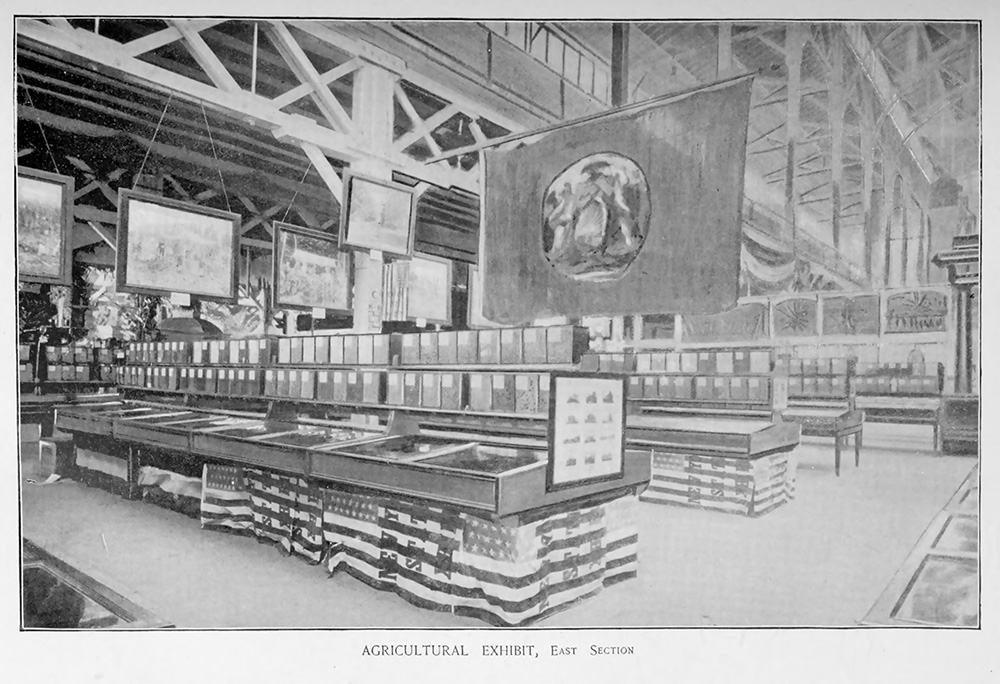
The east section of the New York State agricultural exhibit. [Image from The Report of the Board of General Managers of the Exhibit of the State of New York at the World’s Columbian Exposition. James B. Lyon, 1894.]
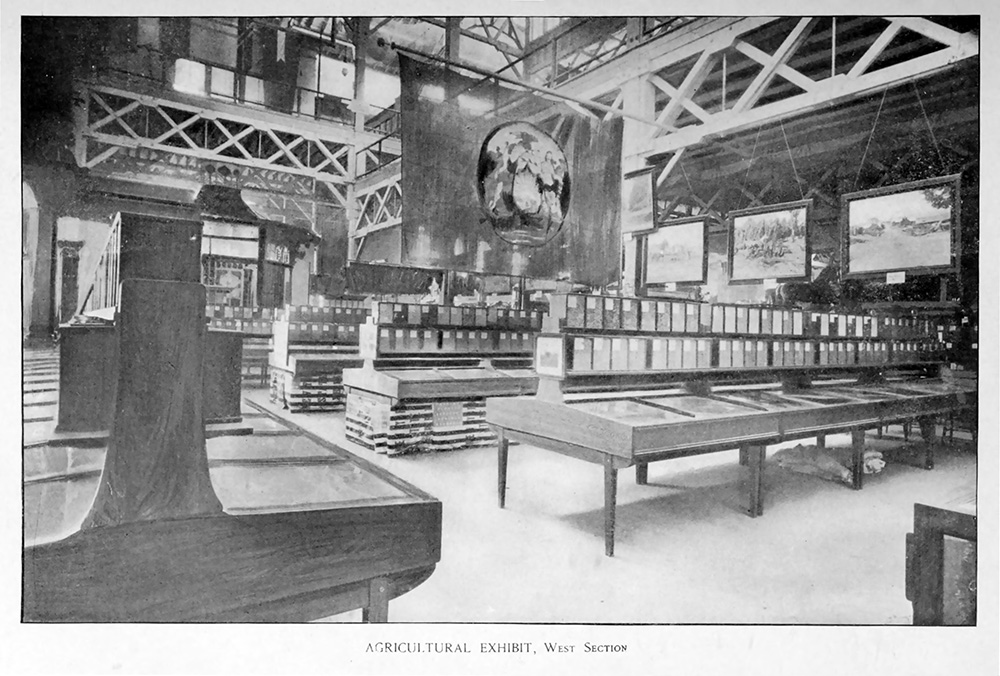
The west section of the New York State agricultural exhibit. [Image from The Report of the Board of General Managers of the Exhibit of the State of New York at the World’s Columbian Exposition. James B. Lyon, 1894.]
“The potato exhibit of New York in the Agricultural Building at Chicago is said to be the best potato display ever made in this country,” wrote Garden and Forest magazine. “More varieties have been shown at other fairs, as the number in this exhibit will probably not exceed 250; but the display shows different methods of treatment.”
The Empire State boasted (in true New York fashion) that:
“The exhibit was planned scientifically and was designed to show the great variety and climate which distinguished the State, and the endless diversity of agricultural products which are thus rendered possible. While New York has always occupied a prominent place in the agricultural States, and led in many staple productions, the fact is not generally recognized that the agricultural products of this State are greater in quantity, more varied in kind, and of equal if not better quality than those of any other State.” [Report, 73]
Garden and Forest detailed New York’s scientific approach to investigating potato production:
“The chief interest lies in the products of different amount of seed. Many varieties were planted with one, two or three eyes in a hill, and an entire hill produced under each method, showing average yield, is displayed upon the tables. All the series seem to agree in affording fewer and larger tubers from the single eyes, and more and smaller ones from the cuttings with three eyes; yet the largest gross yield of merchantable products comes from the three eyes. In other words, a single eye does not give sufficient root-surface to set a large crop, and because of the few tubers, each one grows very large. The reduction of the number of eyes in a hill, therefore, amounts simply to a thinning process.”
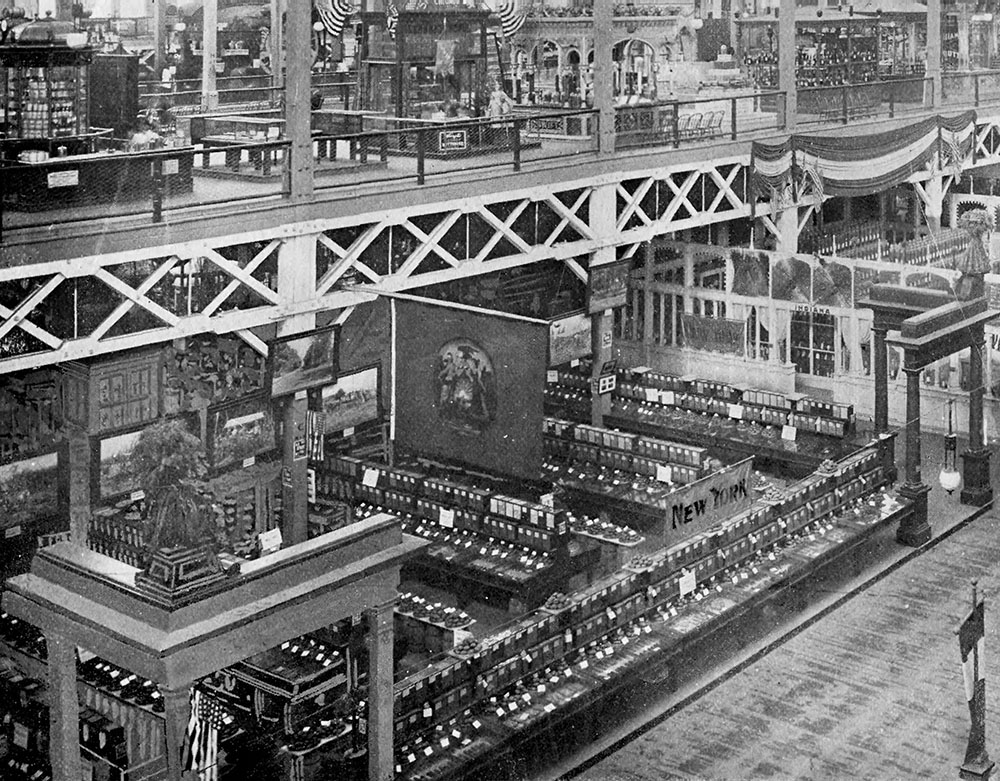
The New York State agricultural exhibit, looking west along the central aisle of the Agricultural Building. [Cropped image from Campbell, James B. Campbell’s Illustrated History of the World’s Columbian Exposition, Volume II. M. Juul & Co., 1894.]
SOURCES
Bailey, L. H. “Brevities” Garden and Forest Sept. 27, 1893, p. 409.
The Report of the Board of General Managers of the Exhibit of the State of New York at the World’s Columbian Exposition. James B. Lyon, 1894.

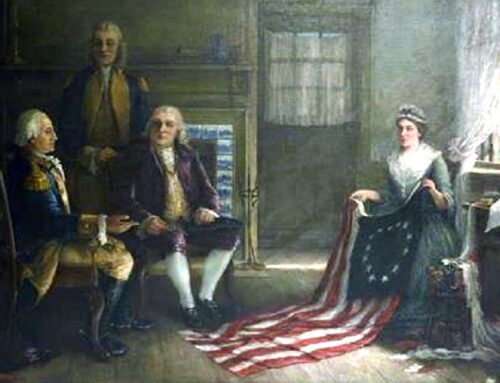
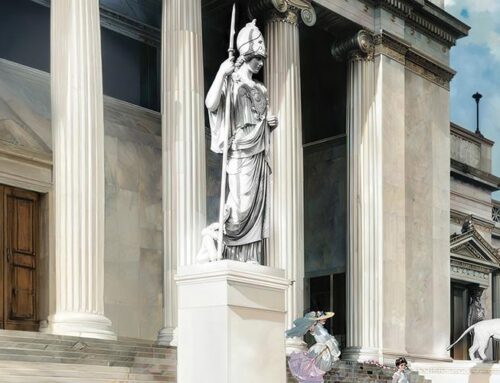
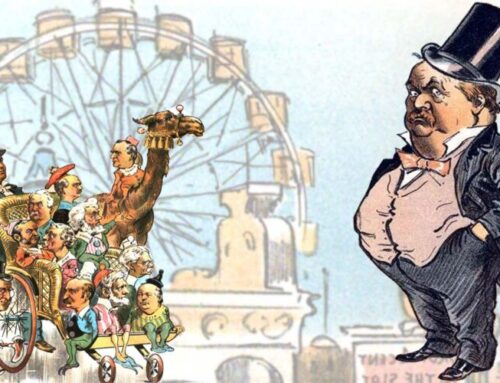
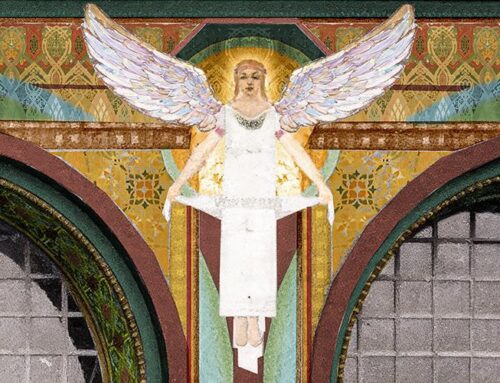
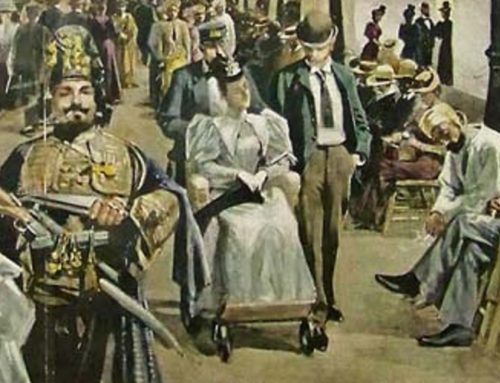
What potato varieties were shown at the fair?
Arizona Wild; Adarandac; Albany Seedling; Alex Prolific; American Giant; American Monarch; American Star; American Wonder; Anges; Arizona Wild; Badger State; Baker’s Seedling; Boley’s Northern Spy; Beauty of Hebron; Ben Harrison; Bermuda Rose; Bermuda White; Big Benefit; Bill; Bliss’ Triumph; Blue Humboldt; Blue Victor; Black Dunmore; Blue Elephant or Victor; Blaine, James G.; Bonnell’s Columbia; Bracey’s Rising Sun; Bracey’s Superior; Brownell’s Best; Brownell’s Winner; Buffalo Beauty; Burbank; Burpee’s Extra Early; Burpee’s Superior; California Blue; Campbell’s Early; Cayuga; Charles Downing; Charley Ross; Charter Oak; Chautauqua; Chenango; Chenango Blue; Chicago Market; Clark’s No. 1; Columbia; Columbia Rose; Corliss; Crane’s June Eating; Crane’s Potentate; Cream City; Crown Jewel; Crown Point; Dakota; Dakota Red; Dandy; Rural No. 2; Delaware; Duell’s Seedling; Dewhort’s Best; Dutton’s Seedling; Early Albino; Early Gem; Early Harvest; Early King; Early Maine; Early Market; Early Mayflower; Early Northern; Early Ohio; Early Puritan; Early Rochester; Early Rose; Early Snowflake; Early Standard; Early Sunrise; Early Vaughan; Early Walton ; Early White Beauty; Early White Prize; Early Wisconsin; Early Xanthus; Empire State; Everett Farmer’s Alliance; Fill Basket; Frankfort; Freeman; Fuller’s Seedling; General Garfield; General McClelland; Genesee Co. King; Grafenbury Giant; Green Mountain; Governor Foraker; Halo of Dakota; Hampden Beauty; Harbinger; Holton Rose; Home Comfort; Humboldt; Hunt’s Early Ideal; Irish Blush; Irish Blue; Iron Clad; Jumbo; Jerry Peachblow; Kings Co. Mammoth; King of Kings; King of the Roses; Late Hebron; Lite Rose; Layman (Rural No. 2); Lenore; Lewis’ Favorite; Maggie Murphy ; Maine , Maine Rose ; Manitoba; Manhattan: Manhattan Rose; Mahopac; Matchless; Milton’s Late White; Minister; Miser; Molly Stark; Monroe Co. Prize; Monroe Seedling; Morgan; Morning Pride; Morning Star; Napoleon; Negro; New Queen; New York Central; Nott’s Victor; Ohio; Ohio, Jr.; Ottawa Rose; Paris Rose; Pat. Murphy; Pearl of Savoy; Pennoyer Prolific; Peoples; Perfection; Seedling, Nos. 101, 121, 131; Pierson’s Eureka; Polaris; Powers of Beauty; Pride of America; Pride of California; Pride of Ireland; Puritan; Purple Trope; Queen of the Roses; Queen of the Valley; Red Ohio; Reeve’s Rose; Robert Emmett; Rochester Rose; Rose Magnum bonum; Rough Diamond; Rural Blush; Rural New Yorker No. 2; Savoy; Seedling Nos. 1, 2, 3, 30, 31, 32, 33, 34, 35, 30, 37, 38, 39, 40, 41, 42, 43, 44, 45, 46, 47, 48, 49, 50; Seneca Beauty; Seneca Reel Jacket; Signal; Silver Dollar; State of Maine; Steel’s Red or Irish Cup; Storm King; Stray Beauty; Strong’s Imperial; Stump the World; Superior; Summit; Sunlit Star; Thunderbolt; Ton Hocks; Uncle Sam; Vanguard; Van Orman’s Earliest; Vaughan; Vick’s Champion; Vick’s Late White; Vick’s Perfection; Wall’s Orange; White Elephant; White Flower; White Rose; White Seedling; White Star; Wilson’s First Choice; Wilson Rose; Wonder; Woodhull Seedling; Wood’s Early; World’s Fair; Workingman’s Potato; Xanthus; Yosemite.